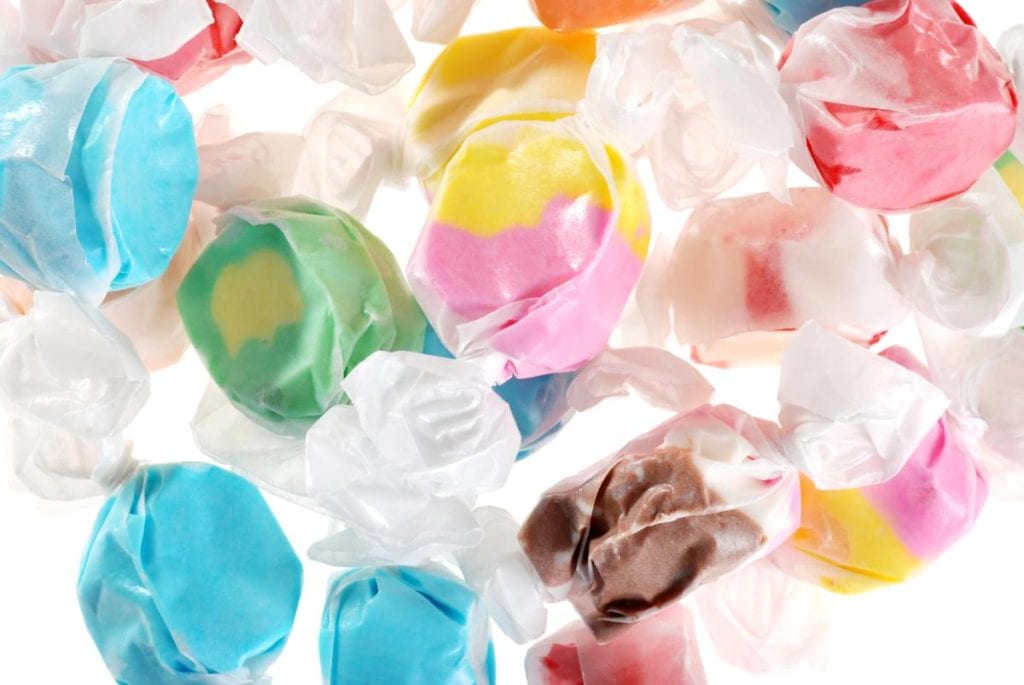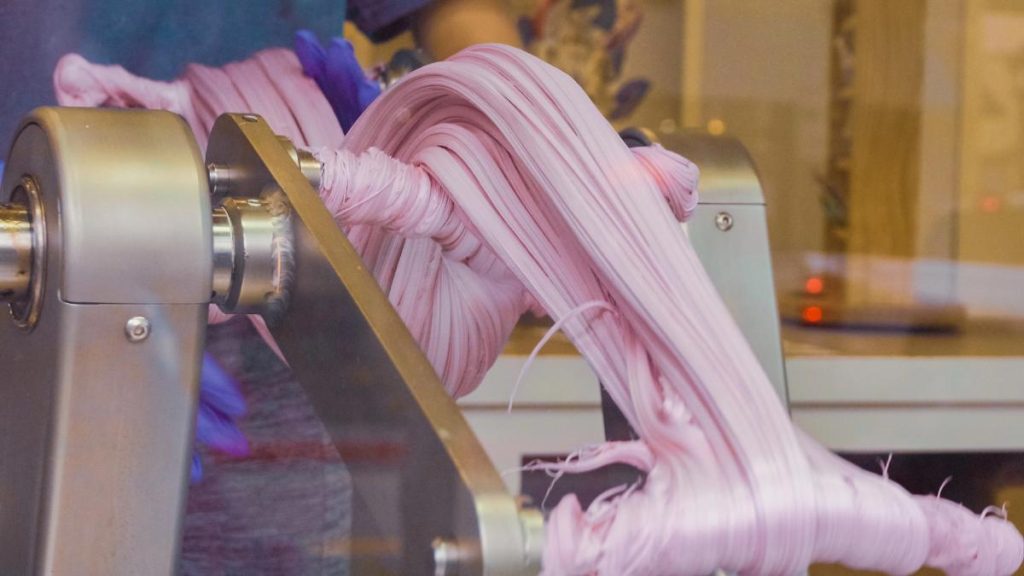Ever wondered why your favorite sweets taste so delicious? Science plays a huge role in creating those delightful flavors and textures we crave in candies and chocolates. From the moment you unwrap a sweet treat, a careful blend of chemistry and ingredients works harmoniously to satisfy your palate.

The process starts with raw ingredients like cocoa beans, which undergo a fascinating transformation from bean to bar. Roasting, grinding, and tempering cacao involve precise techniques and scientific principles that ensure rich, consistent chocolate every time. Understanding these processes not only makes you appreciate your sweets more but also highlights the meticulous craft behind confectionery.
The sweetness itself is a result of specific chemical reactions. Different sugars interact with our taste receptors in various ways, creating unique flavor profiles. Familiar favorites like sucrose, glucose, and fructose contribute to the sweet experience in distinctive manners, enhancing the overall enjoyment of your beloved candies.
Key Takeaways
- The science behind sweets influences their flavor and texture.
- Cocoa beans undergo detailed processes to become chocolate bars.
- Various sugars create unique sweet experiences.
Composition of Candies
Candies come in many forms, but they usually contain a few key ingredients. Sugar acts as the base. There are also other components like corn syrup, gelatin, dairy, and flavorings, which combine to create all Taffy flavors.
- Corn syrup prevents crystallization, giving candies a smooth texture.
- Gelatin is often used in gummy candies, contributing to their chewy consistency.
- Some candies incorporate dairy products like milk, which adds creaminess.
- Flavorings and colorings are added to attract both the eyes and taste buds.
- Different production processes, such as boiling or tempering, contribute to the unique textures and structures of candies.
Sugar’s Role in Flavor
Sugar isn’t just for sweetness. It impacts mouthfeel, aroma, and the overall eating experience. When sugar is heated, it undergoes a process called caramelization, creating complex flavors ranging from buttery to nutty.
- High sugar concentration influences the texture, making candies hard, chewy, or soft depending on the type.
- In combination with acids or other flavorings, sugar can highlight or balance out other tastes, creating a well-rounded flavor profile.
- Moreover, the type of sugar (glucose, fructose, sucrose) used can alter the taste experience.
Chemistry of Sweetness
The science of what makes sweets appealing revolves around the interaction of molecules with taste receptors and the differences between natural and artificial sweeteners. Understanding these elements can help you choose the perfect treats. So you can enhance your gift-giving when you grab bulk taffy bags for retail.
Sweetness Receptors
Sweetness is perceived through taste receptors on the tongue called T1R2/T1R3 heterodimer receptors. These receptors detect sweet molecules and send signals to the brain. Sugars like glucose and fructose bind to these receptors strongly. The binding mechanism triggers a release of neurotransmitters, resulting in the sensation of sweetness. Different sweet compounds can vary in how they bind, affecting the intensity and duration of perceived sweetness.
Artificial vs. Natural Sweeteners
Artificial sweeteners, such as aspartame and sucralose, aim to mimic the sweetness of natural sugars but with fewer calories. Natural sweeteners come from sources like fruit and honey. Differences lie in the molecular structures and caloric content. Artificial sweeteners often bind to the same sweetness receptors but may do so more efficiently, providing intense sweetness even at low concentrations. Health impacts and metabolic effects vary between artificial and natural sweeteners, influencing their use in different foods and beverages.
Composition of Candies
Candies come in many forms, but they usually contain a few key ingredients. Sugar acts as the base. There are also other components like corn syrup, gelatin, dairy, and flavorings, which combine to create all Taffy flavors.
Key Ingredients
- Corn Syrup: Prevents crystallization, giving candies a smooth texture.
- Gelatin: Often used in gummy candies, contributing to their chewy consistency.
- Dairy Products: Some candies incorporate dairy products like milk, which adds creaminess.
- Flavorings and Colorings: Added to attract both the eyes and taste buds.
Production Processes
Different production processes, such as boiling or tempering, contribute to the unique textures and structures of candies.
Sugar’s Role in Flavor
Sugar isn’t just for sweetness. It impacts mouthfeel, aroma, and the overall eating experience. When sugar is heated, it undergoes a process called caramelization, creating complex flavors ranging from buttery to nutty.
Caramelization
High sugar concentration influences the texture, making candies hard, chewy, or soft depending on the type. In combination with acids or other flavorings, sugar can highlight or balance out other tastes, creating a well-rounded flavor profile. Moreover, the type of sugar (glucose, fructose, sucrose) used can alter the taste experience.
The Art of Taffy Making
Taffy, a favorite among many, is a unique type of candy that showcases the blend of art and science in confectionery.

Stretching and Pulling
The process of making taffy involves stretching and pulling the candy mixture to incorporate air. This not only gives taffy its light, chewy texture but also enhances its flavor. The stretching process aligns the sugar molecules, resulting in a smooth and pliable candy.
Flavor and Color
Once the taffy has been stretched to the desired consistency, flavorings and colorings are added. These are kneaded into the taffy, ensuring even distribution. Popular taffy flavors include classics like vanilla and strawberry, as well as more adventurous options like buttered popcorn and maple bacon.
From Cocoa Bean to Chocolate Bar
While taffy is a popular sweet, the journey of chocolate from bean to bar is equally fascinating.
Harvesting Cocoa Beans
The journey of creating chocolate begins with the meticulous harvesting of cocoa beans. This initial step involves selecting ripe cocoa pods from cacao trees, which are then carefully cut open to extract the beans and surrounding pulp. The harvesting process is crucial, as the quality of the beans at this stage sets the foundation for the entire chocolate-making process.
Fermentation
Following the harvest, the beans undergo a vital fermentation process, typically lasting around 5-7 days. During fermentation, the beans are placed in shallow containers and covered, allowing natural microbial activity to occur. This process is essential for developing the beans’ flavor profile. The heat generated by the microbial activity transforms the sugars in the pulp into acids, which penetrate the beans and initiate the formation of the complex flavors that are characteristic of high-quality chocolate. Proper fermentation not only reduces bitterness but also enhances the overall taste, making this step indispensable in the chocolate-making journey.
Drying the Beans
After fermentation, the beans are spread out to dry, usually under the sun. This drying phase is critical to reducing the moisture content to about 6-7%, preventing mold growth and ensuring the beans are suitable for further processing. The drying process also preserves the flavor compounds developed during fermentation, ensuring that the beans retain their rich, nuanced taste.
Roasting and Cracking
Once dried, the beans are roasted to bring out their full flavor potential. Roasting is a delicate process that requires precise temperature control to avoid burning the beans while achieving the desired flavor profile. The beans are then cracked and winnowed to remove the outer shells, leaving behind the cocoa nibs, which are the edible part of the bean.
Grinding and Refining
The next step is grinding the nibs into a paste called cocoa mass or chocolate liquor. This paste can be further processed to separate cocoa butter from cocoa solids, or it can be used directly in chocolate production. The mixture is then refined to achieve a smooth texture, a process that can take several hours.
Conching
One of the final and most critical steps is the conching process. Conching involves continuous mixing and aeration of the chocolate mass, often for several days. This step helps to refine the texture of the chocolate, making it smooth and silky. It also enhances the flavor by allowing volatile acids to evaporate and ensures that the cocoa butter is evenly distributed throughout the mixture. Temperature control during conching is crucial, as it affects both the flavor and texture of the final product. Higher temperatures can mellow the chocolate, while lower temperatures can retain more intense flavors.
Tempering and Molding
The conching process, combined with all the preceding steps, results in a homogenous, velvety chocolate that is ready for tempering and molding. Tempering involves carefully cooling the chocolate to stabilize the cocoa butter crystals, giving the chocolate a glossy finish and a satisfying snap when broken.
Wrapping Up
The intricate science behind your favorite sweets reveals a world of meticulous processes and carefully balanced ingredients. From the transformation of raw cocoa beans into silky chocolate bars to the chemical interactions that define the sweetness of candies, every step is a testament to the blend of art and science in confectionery.
The variety of sugars used, the fermentation and conching of chocolate, and the use of natural versus artificial sweeteners all play pivotal roles in creating the delightful treats we love. Understanding these elements not only deepens our appreciation for these delicious indulgences but also highlights the expertise and precision involved in crafting them.
Whether you’re savoring a piece of gourmet chocolate, nibbling a piece of candy bark, or enjoying a simple candy, the science behind these sweets ensures that every bite is a perfect harmony of flavor and texture.
